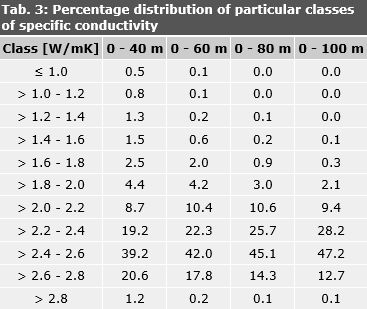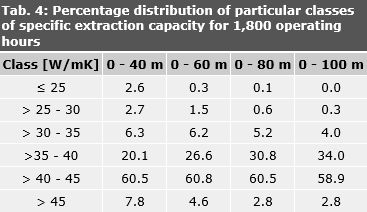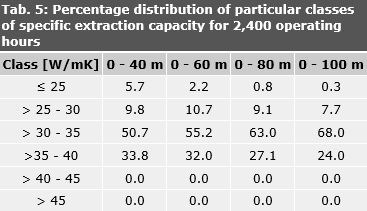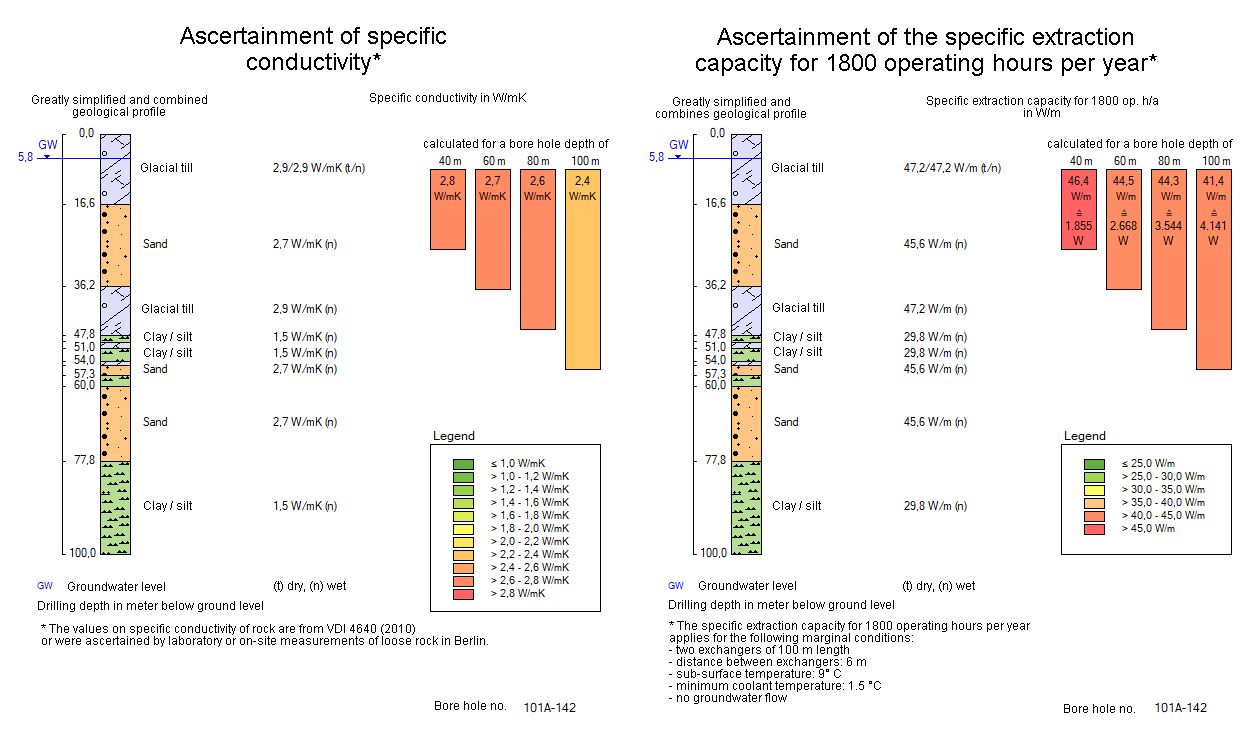These maps show the specific conductivity and the specific extraction capacity for the state of Berlin. The specific extraction capacity calculated referred to the average single-family home, and are differentiated between space heating only, with an estimated 1,800 annual operating hours (Maps 2.18.5 – 2.18.8), and space heating plus hot water supply, with an estimated 2,400 annual operating hours (Maps 2.18.9 – 2.18.12), and is valid only under the given boundary conditions, shown in chapter Methodology. Maps have been prepared for four established possible depth levels: 0 – 40 m, 0 – 60 m, 0 – 80 m and 0 – 100 m.
Based on these maps, an evaluation of the suitability of a site for use of geothermal energy is possible. In the simple case of a single-family home, extraction capacity can be directly determined; for other buildings, it can be calculated on the basis of specific conductivity (Maps 2.18.1 – 2.18.4).
This year’s update of the geothermal map was implemented programmatically as 2015 using mapping rules of the petrography and genesis attributes of the bore hole database. This results in differences in individual cases to the 2010, 2012 and 2015 map edition.
The percentage distribution of the particular classes of specific conductivity present on the territory of Berlin shows that more than 40 % of the surfaces at all depths can be assigned to the class > 2.4 – 2.6 W/mK (Tab. 3).





